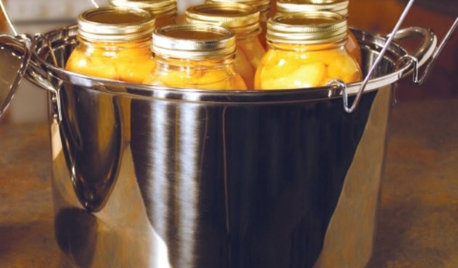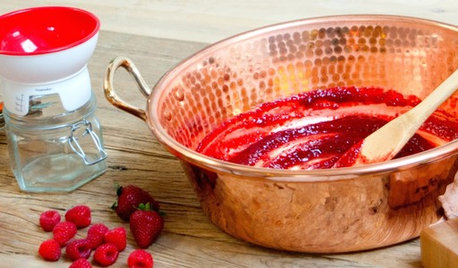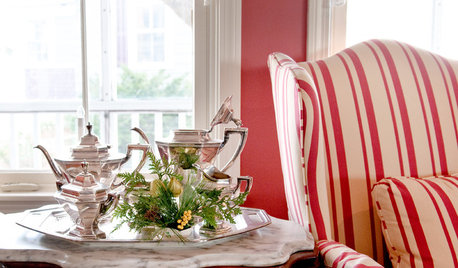Small Batch Preserving Caponata . . .
lpinkmountain
9 years ago
Related Stories

PRODUCT PICKSGuest Picks: Canning, Preserving, Steaming, Dehydrating
20 products to help make fall produce last through the season and beyond
Full Story
ORGANIZINGSimple Pleasures: Preserving Analog Memories in a Digital World
Too often our photos and mementos accumulate in computers and in piles. Here’s how to free them up to be displayed and enjoyed
Full Story
SAVING WATER11 Ways to Save Water at Home
Whether you live in a drought-stricken area or just want to help preserve a precious resource, here are things you can do to use less water
Full Story
BATHROOM COLOR8 Ways to Spruce Up an Older Bathroom (Without Remodeling)
Mint tiles got you feeling blue? Don’t demolish — distract the eye by updating small details
Full Story
Houzz Gifts: 31 Finds for the Chef Who Has Everything
Delight serious cooks with the latest in kitchen gadgets, accessories, cookware and small appliances from Houzz
Full Story
SHOP HOUZZHouzz Products: Save a Taste of Summer
Can't bear to part with the flavors of summer peaches, berries and tomatoes? Then jam on it!
Full Story
ARCHITECTURE10 Advantages of the Humble Ranch House
Boomer-friendly and not so big, the common ranch adapts to modern tastes for open plans, outdoor living and midcentury mojo
Full Story
LIFESimple Pleasures: Indulging in Teatime
Get out the china cups and cream-slathered scones. Tea with treats can make even an uneventful day feel extravagant
Full Story
FARM YOUR YARDHello, Honey: Beekeeping Anywhere for Fun, Food and Good Deeds
We need pollinators, and they increasingly need us too. Here, why and how to be a bee friend
Full Story
FEEL-GOOD HOMESimple Pleasures: Make Do and Mend
Experience the satisfaction of fixing, repurposing and creating things yourself around the home
Full StoryMore Discussions






SleekKitty
drmbear Cherry
Related Professionals
Clark Landscape Architects & Landscape Designers · La Marque Landscape Architects & Landscape Designers · Desert Hot Springs Landscape Contractors · El Mirage Landscape Contractors · Hollywood Landscape Contractors · Kaneohe Landscape Contractors · Riverview Landscape Contractors · Rochester Landscape Contractors · Seymour Landscape Contractors · Spring Landscape Contractors · Tigard Landscape Contractors · Kingsburg Landscape Contractors · Maplewood Landscape Contractors · Minnetonka Roofing & Gutters · Libertyville Driveway Installation & Maintenancetheforgottenone1013 (SE MI zone 5b/6a)
lpinkmountainOriginal Author
lpinkmountainOriginal Author
cannond
2ajsmama